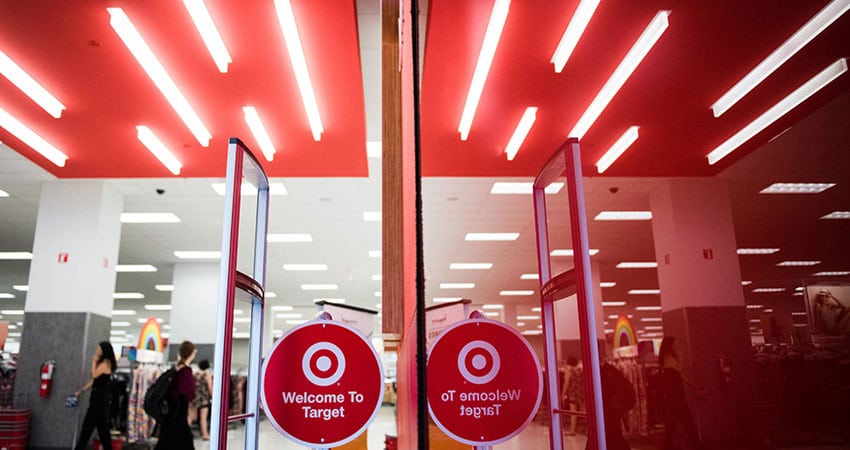Target joined fellow big-box retailer Walmart today in posting a first-quarter earnings figure well below expectations as inflationary strain, inventory overstocks and spiraling costs including from labor and fuel continue to challenge the sector.
The bad news from Target had a ripple effect across a number of retail stocks, including Tractor Supply, Ulta Beauty, Williams Sonoma, Wayfair, lululemon and Academy Sports, among others seeing declines. Target itself saw an initial share price drop of about 25% after posting earnings.
Home Depot headed in the other direction in its earnings report this week, with sales and EPS tracking ahead of Wall Street expectations as it saw fewer shoppers but higher average transactions.
Net earnings for Target were $1 billion, down 52% from $2.1 billion a year earlier, while adjusted earnings per share was $2.19, a steep drop vs. the analyst consensus of $3.07 per share based on Refinitiv data. Revenue did outpace expectations, coming in at $25.17 billion vs. $24.49 billion, an increase of 4% from $24.2 billion a year earlier.
The comp numbers told part of the story for Target. Store comps increased 3.4% for Q1, compared to 18% growth a year earlier, while digital comps were up 3.2%, vs. 50.2% in 2021. It should be noted that 2021 was an outlier, with government stimulus funds contributing to significant growth across retail and ecommerce as compared to 2020, the year of the shutdowns. Also, Target has posted an impressive string of 20 consecutive quarters of comp growth.
Overall traffic to stores and online increased 3.9% vs. a year earlier. Same-day services, rolling together curbside pickup, in-store pickup and Shipt delivery, was up 8% — but it had grown a whopping 120% in Q1 of 2021. More than 95% of Target’s Q1 sales, both digital and physical, were fulfilled from its stores.
“Guests continue to depend on Target for our broad and affordable product assortment, as reflected in Q1 guest traffic growth of nearly 4%,” said chairman and CEO Brian Cornell in a release. “Throughout the quarter, we faced unexpectedly high costs, driven by a number of factors, resulting in profitability that came in well below our expectations, and well below where we expect to operate over time.”
Despite the challenges, Cornell said Target’s growth algorithm is calling for “mid-single-digit revenue growth and an operating margin rate of 8% or higher over time.” For all of 2022, Target is projecting low-to-mid-single-digit revenue growth and operating income margin of about 6%.

